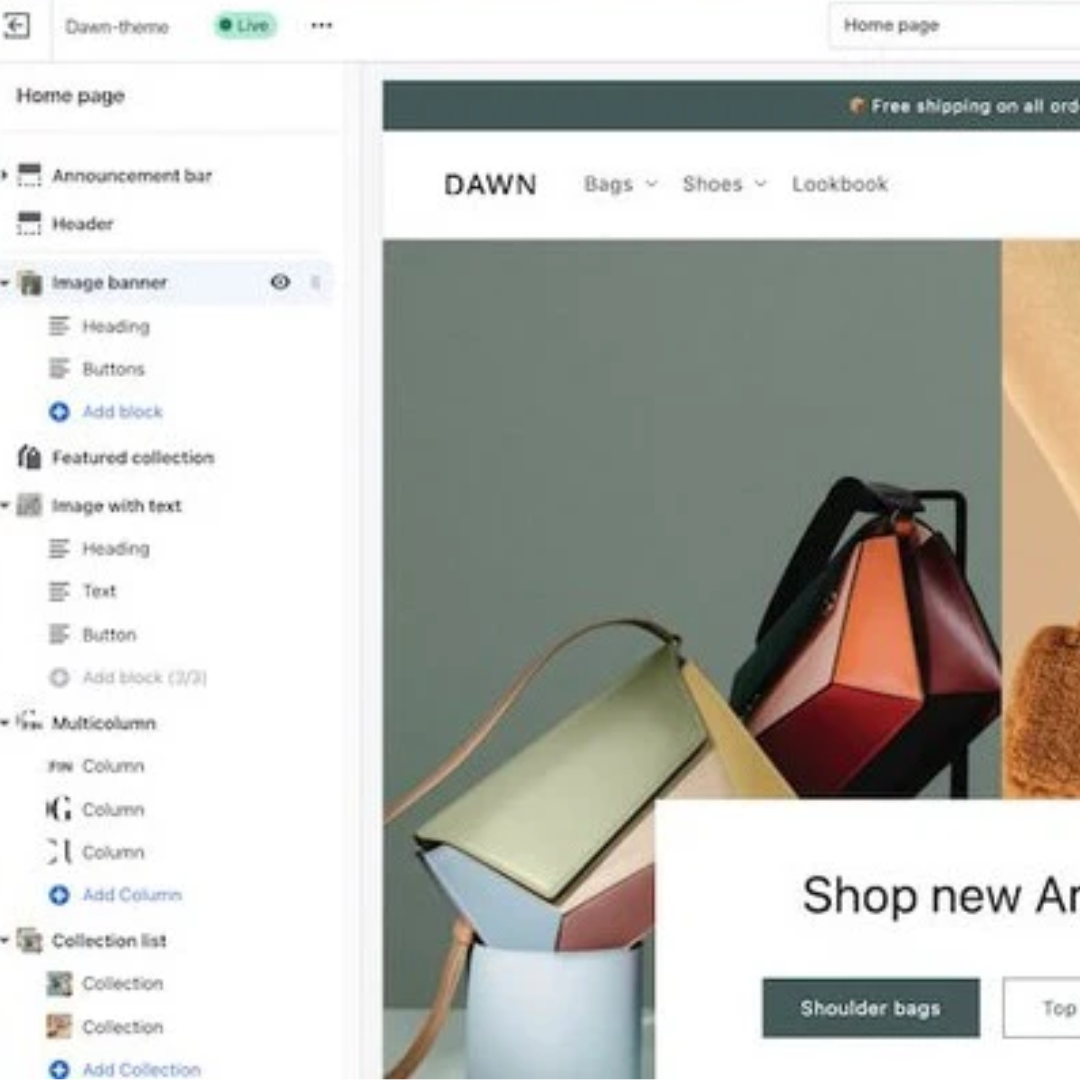5 Top eCommerce Trends For 2022
From major technological advancements to widespread disruption of supply chains, 2021 has been a tornado of a year for businesses worldwide. With no end to the lightning bolts of big change in sight, it's now more critical than ever before to keep track of trends and stay ahead of the curve.
Is eComm in 2022 All About Technology?
Kind of, yes, but not exactly. The most prevalent trend of 2021 has been that eCommerce has had a massive paradigm shift. The eCommerce industry is growing exponentially. With this growth comes improved technology and a more targeted approach to eCommerce. Digital store owners have to meet the increasing demand for making shopping simpler, better, and faster. Again, technology is needed to make it happen.
Let's delve into this evolution, and explore some of the trends we can expect to come from it in the coming year.
1. Augmented Reality for eCommerce Stores
Visiting an online store is convenient. It saves time, the effort of getting dressed and going to a store, and it can save money. Waiting for that carefully selected item to arrive can be exciting. Unfortunately, the arrival is not always that sweet. We've all experienced a gap between what we see online and what it's like when it arrives, and we experience it in our homes and lives.
Maybe you ordered a new lipstick, and the color just doesn't go with your skin tone, or you bought a new set of lamps that don't work when you place them in your bedroom. Or worse, you ordered a couch that looks so wrong in your lounge you can forget about binge-watching Vikings again that weekend. With Augmented Reality (AR), you can fill this gap. If it's done right, you'll see what the product looks like in real life and how it will fit into your everyday lifestyle.
AR gives shoppers the confidence to make smart purchasing decisions. Typical AR tools include product visualizers, product builders, and 3D mapping. These tools make it possible for shoppers to "try out" products online. Take a look:
- Sephora's Virtual Artist is an AR app that allows users to try hundreds of make-up products before buying them. It maps their faces and lets them try out individual products or complete looks.
- Ikea's Place allows you to virtually "place" decor items like rugs and lamps and furniture like couches and tables in your home. It helps you ensure the item is the right size and fits into the room. Everything is true to scale, so you'll get an accurate idea of what it would look like in real life.
AR is elevated product merchandising. It helps create an online experience that simulates an enjoyable offline experience while making the buying experience engaging and, most importantly, simple.
2. Voice Search Online for eComm
In 2016, Gartner predicted that 30% of shopping searches would be done through a device without a screen. Although we're not quite there, it is interesting to note that Google reported that 27% of the world's population is using voice search on mobile. If you think about it, who hasn't heard of Alexa?
Whether you're home, at work, or commuting, speaking into a voice-enabled gadget makes shopping so much easier. Current predictions estimate that the voice-search market will reach $4 billion by 2022 in North America alone. This creates massive opportunities for eCommerce store owners to use optimization strategies geared for voice.
It's all about speed and accessibility. We're on the go, and we need quick, simple, and smart solutions. To make things easier for shoppers (and store owners), they can try several excellent apps available for Shopify stores, for example:
- Expertrec Smart Search Bar - Quick set up and offers variant searches and search filters.
- Elsner: Voice Search - Customizable floating AI mic feature and 24/7 support.
- PHEBI Voice & Instant Search - Handy dashboard with real, actionable data access.
Incorporating voice shopping makes it simpler for customers to buy products and improves their experience with your brand. It also gives you the perfect lead-in to conversational shopping, our next trend!
3. Chatbots And Conversational Shopping
Do you find shop assistants a prerequisite for shopping trips or a pesky nuisance? Either way, we've all experienced needing questions answered before making a purchase or getting annoyed with an overzealous shop assistant hovering around, pushing a hard sale. In an ideal world, they're only there to give you the exact information you need and to leave you alone when you don't want to be bothered!
With conversational shopping, this is possible. Chatbots, chat apps like Facebook Messenger, and voice technology like Siri and Alexa help shoppers to have a more effortless shopping experience. They get their questions answered, get recommendations, and even help make purchases. Conversational shopping can help store owners engage with customers in real-time.
Chatbots not only help the shopping process, but they're also playing an increasing role in customer service. The advancement of the bots over the past few years makes them able to perform so many tasks, like:
- Answering questions about products, delivery, etc.
- Making product recommendations.
- Communicating sales offers.
- Collecting feedback from surveys.
These tasks make it possible for eCommerce businesses to serve thousands of customers simultaneously without employing thousands of customer service agents and creating the infrastructure available for them to work. It is an excellent logistical solution and helps give the shopper a more personalized experience, something cultivated in the online shopping realm. Since it is yet another top trend to watch for in the coming year, let's dive into that.
4. Personalization is Key for eCommerce Success in 2022
A few decades ago, a shopping trip involved going to the store where shoppers and store assistants or owners greeted one another by the name. They may have had a conversation that involved recommendations, or the store assistant helped the shopper gather their regular items. Sometimes they'd even say something like, "Hey Betty, you know that peanut butter you love? Well, we have a special running on it." It was personal, i.e., friendly, engaging, and pleasant.
These days, personalization takes on various forms, from leveraging AI to 'understand' shoppers through behavior to making chatbots available and creating personalized, made-to-order items. With digital shopping taking over from brick and mortar stores, it's critical to keep them happy, and that's quite a task!
Customers are not easily satisfied. Having them sort through category after category to find the perfect product makes pleasing them even more challenging. Everybody wants to feel seen and heard, which is relevant to all aspects of their lives, even shopping.
With personalization, even though people are shopping far away from shops and shop assistants, it's still possible to make it about them. Personalization increases satisfaction because it makes their experience exclusive. Over 20% of people are happy to share data in exchange for this exclusivity. According to research, a staggering 70% of consumers will stick to brands that understand them.
Sharing data means increased brand loyalty which improves sustainability. It drives profits over the short and longer-term - everything you want in a trend. Here are some excellent examples of personalization:
- State Bags has a nifty personalizing tool that allows shoppers to add a selection of symbols, patches, and custom initials to the product in a chosen font and color. This feature is available on almost all of their products. It’s a fun way to add a personal touch to a high-quality product.
- Raw Generation offers shoppers the option to build boxes of juice or they can build a cleanse. The Build-a-Box feature allows them to put together a 12, 18, 30, or 40 pack box of juice. The Build-a-Cleanse lets shoppers choose how long they want to cleanse for and asks questions about their lifestyle. It then gives them options to choose flavors. This personalization tool makes it easy to make healthy choices!
- Function of Beauty uses this hair quiz to help customers choose hair products suited to their unique needs. It gives the recommendation based on a couple of questions, and then things get interesting! Customers get to choose the fragrance of their products, the fragrance strength, and its color. You can also choose a name for your formula printed on the bottle and save it for future orders. There's also a skin quiz and a body quiz, if you're wondering. Enjoy!
- Converse gives customers the option to customize their iconic sneakers. From changing the color on every panel to changing the lining, customizing the laces, and the text on the embroidery, they can even choose glitter in different colors for their Chucks!
- Care/of makes their customers' journey to health so much easier with personalization. Like Function of Beauty, they also have a quiz that helps their customers determine what vitamins they should take. It considers lifestyle and health needs and gives tailored guidance and recommendations.
As more brands take a personalized approach, the online shopping experience is getting better and better. Even though it's not exactly like the Mom and Pop stores of old, personalization creates a different type of brand loyalty. Futuristic personalization still involves customers supporting their favorite store because they feel heard and seen, even though they don't know the owners personally.
5. Sustainability
Last but not least, sustainability is more than just a trend; everyone needs to get on board with it. eCommerce exploded worldwide with several positive outcomes. It also created more waste and a higher carbon footprint. With climate change on the tip of almost every tongue, shoppers are more interested in products produced, packaged, and delivered sustainably.
According to a survey by Forrester, 57% of shoppers are more likely to purchase from companies that contribute to sustainability. Not only earth-friendly brands that create sustainable products are responsible for sustainability. Every business should incorporate sustainable practices, like:
- Making material changes.
- Offsetting their carbon footprint.
- Donating to organizations focused on sustainability.
- Implementing sustainable shipping practices.
- Updating brand initiatives.
- Lowering the return rate.
Our values should align with target customers to build trust and drive growth. In an age where you have to stand out from the crowd to create customer loyalty, sustainable practices will help, and they will help the earth.
What it All Means
We don't have holographic shop assistants we can turn on and off, and it's not possible to install a chip to read our shopping lists from our minds just yet.
However, technology is rapidly evolving and eCommerce is not getting left behind. Competition is fierce, and shoppers are discerning and demanding. eCommerce businesses have to keep up with the trends and embrace technologies that make the customer journey smoother at every turn.




